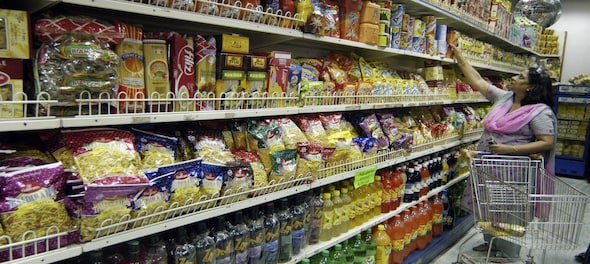
The new government has set the pace by taking steps against corruption and adopting a stern stance on the Jammu and Kashmir issue. With around 65 percent of the population under 35, the next major challenge for the government is to streamline the skills training of youth to make them productive and ensure that their earnings are sustainable.
The economy of India has to constantly evolve to bring in new kinds of jobs and that is to be preceded by appropriate skilling. In the recent press meeting, the finance minister has shown readiness to immediately tighten the reins, which is a welcome step.
The need is to revisit the concepts and policies at macro and micro level to check the layoffs that seem to be making headlines across various sectors. Reduction in consumption is having an adverse impact on even the fast-moving consumer goods sector. On top of that, new jobs have to be created for the new lot entering the job market. Abstracts like efforts to enhance GDP, ease of doing business and industry 4.0 are not enough; a major relook at making funds available to spur consumption, modernisation and business expansion is needed.
The immediate steps presented by the finance minister will need to have robust detailed mechanisms in place to plough them into the system. The liquidity issue of banks will have to be supplemented with the confidence to remove the fear factor that has set in. The RBI encouraging digital tracks and payments should encourage bankers to speed up lending to increase liquidity.
The delay in export-related GST refund, the 60 days’ gap, hits liquidity; it has to be provided on a real-time basis. In the digital era, any verification beyond a couple of days to provide refund blocks the liquidity that a small MSME in the export business cannot afford. The credit in India is not cheap and makes this block a worry point. The right beginning made by the ministry of finance can cut down the time lag.
An immediate step is to have a relook at the taxation in India. For the first issue to enhance consumption there is need to have disposable income in households. The slow increase in MGNREGA wages has not prompted market to enhance the wages, low rate of agriculture produce has not added to the enhancement of earnings from agriculture thus impacting the sale of two wheelers and agriculture-related vehicles. It has come down 10 percent, with agriculture credit growth 6 percent against 7.9 percent during the same period last year. The immediate need is to have a relook at the formulae for calculating the minimum wage.
Even small value items like Parle-G is taking a hit in sales by 8-9 percent. Thus the first issue is the GST on consumer goods. Whether it is automobile manufacturing or MSME goods, the four slabs of GST have increased the outflow from the consumer’s pocket. The discussions to reduce the GST to two slabs of 5 percent for goods consumed by the lower middle class and 15 percent on finished goods will fuel economic growth immediately. It is something that is being discussed for long but not executed because of fear that the revenue income will fall drastically.
The tax regime is to go a long way for single tax of GST and merging of various other taxes and duties. There is direct and indirect tax. Direct tax is in terms of personal Income Tax, Capital Gains Tax (where some respite has been announced by the FM), Securities Transaction Tax, Perquisite Tax, Rate Tax on agriculture and so on. Indirect tax is GST (with hopes that it will be a single tax) but petroleum products, electricity and alcohol is not yet a part of GST and the good step of setting off the amount of input tax by a registered dealer against the amount of his output tax is laudable. One is also subjected to multiple duties in terms of excise duty, corporation tax and custom duties. Then there is entertainment tax and toll road tax. The regime of heavy and multiple taxation has resulted in low liquidity, reducing the spare income in hand for spending. The companies have lesser resources to reinvest in expansion, a deterrent to create new jobs. This needs a complete relook.
Private corporate investment, public sector investment and household investment as a percentage of the GDP are on the decline. One of the major contributors is high rate of credit as compared to the rest of the world. The credit in India is expensive.
A cess is levied by the government to raise funds for a particular purpose; it is not long-term nor can it be a regular source of revenue. We have continued education cess, swachh bharat cess, krishi kalyan cess, infrastructue cess recovered on consumption of petroleum and related products, and health and education cess. It is a stream of revenue for a specific purpose, but adds to out-of-pocket expenditure.
While the immediate corrective steps taken by RBI and the finance ministry are infusing optimism, the need is to rationalise all forms of tax to increase liquidity in the market, trigger economic growth and job creation.
Aruna Sharma is a former bureaucrat, last served as Secretary, Ministry of Steel in Government of India.
First Published: Aug 29, 2019 5:57 PM IST
Check out our in-depth Market Coverage, Business News & get real-time Stock Market Updates on CNBC-TV18. Also, Watch our channels CNBC-TV18, CNBC Awaaz and CNBC Bajar Live on-the-go!


Lok Sabha elections: 4th phase sees over 68% voter participation, West Bengal leads with 76% turnout
May 14, 2024 1:47 AM
Lok Sabha elections phase 4 witnesses around 63% voter turnout, experts weigh in on key contests
May 14, 2024 12:06 AM
Lok Sabha Election 2024: Shiv Sena UBT’s Arvind Sawant highlights Uddhav Thackeray's vision for Mumbai’s progress
May 13, 2024 9:21 PM
Exclusive interview: 'Southern states will be a big surprise,' says PM Modi
May 13, 2024 9:05 PM

